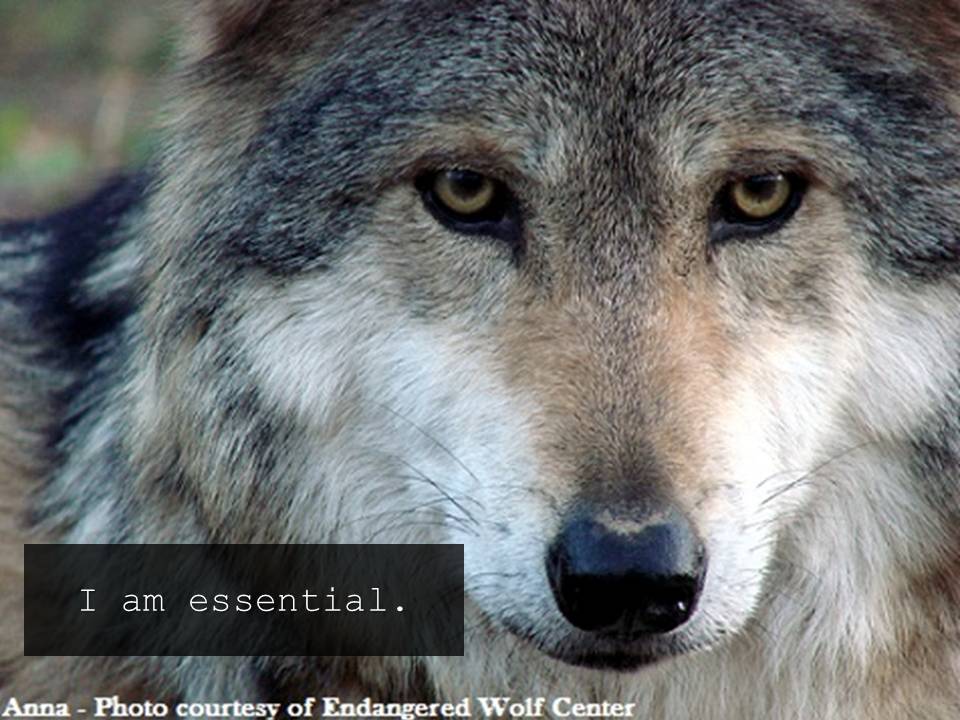In the News: Federal Plan Would Expand Wolf Territory in Arizona, New Mexico

With fewer than 90 Mexican gray wolves in the wild, US Fish and Wildlife Service is proposing to make changes that could push them closer to extinction or finally help them thrive. The decision will be made in the next few months and they need to hear from you!
Submit a letter to the editor responding to this article and influence decision-makers and thousands of your fellow citizens. Tips and talking points are below, but please write in your own words, from your own experience. Don’t try to include all the talking points in your letter.
Talking points
- Start by thanking the paper for this article.
- US Fish and Wildlife Service (USFWS) should move forward with allowing new wolves to be released throughout the larger area proposed. The Mexican gray wolf is the most endangered mammal in the U.S. with only about 83 in the wild. Additional wolves must be released into the wild now to increase the genetic health of the species. Numerous wolves are in captive breeding facilities around the country, prepared for, and awaiting, release.
- USFWS should not allow more killing of critically endangered wolves. The draft proposal will push Mexican gray wolves towards extinction by allowing many more of them to be killed under all kinds of justifications. With fewer than 90 in the wild, every wolf is important. These native lobos need more protections, not less.
- Wolves once lived throughout Arizona and New Mexico and played a critical role in keeping the balance of nature in place. We need to restore this important animal that has been missing for too long. People who care about wolves have an important opportunity to speak out for their recovery in August. US Fish and Wildlife Service will hold a hearing in Pinetop, AZ on August 11th on the future of critically endangered Mexican gray wolves. More information can be found at mexicanwolves.org.
- Wolves need freedom from boundaries. Given room to roam, the wolves will establish themselves in suitable areas with adequate game. USFWS must change the rules that do not allow wolves to establish new packs and populations in additional areas that are essential to their recovery.
- Additional populations of Mexican wolves are necessary to their recovery and genetic health, as is the ability for wolves to move between populations. Capturing and moving wolves because they roam beyond an artificial boundary is always a risky business that can result in death or trauma to the wolf.
- The USFWS should designate Mexican gray wolves as essential. By labeling all of the wild wolves as “nonessential” the USFWS ignores science and the reality of 16 years of experience with reintroducing wolves. The 83 wolves in the wild have up to four generations of experience in establishing packs and raising pups and are over 22% of all of the Mexican wolves in the world.The fourth generation wild lobos are not expendable and are essential to recovering this unique subspecies of wolf.
- The USFWS needs to quit stalling and complete a comprehensive recovery plan. USFWS admits that their 1982 recovery plan is not scientifically sound and does not meet current legal requirements — yet in its proposed rule USFWS continues to emphasize a woefully inadequate population of only 100 wolves in the wild, ignoring the best available science.
Make sure you:
- Thank the paper for publishing the article.
- Do not repeat any negative messages from the article. Remember that those reading your letter will not be looking at the article it responds to, so this is an opportunity to get out positive messages about wolf recovery rather than to argue with the original article.
- Keep your letter brief, between 150-300 words.
- Include something about who you are and why you care: E.g. “I am a mother, outdoors person, teacher, business owner, scientific, religious, etc.”
- Provide your name, address, phone number and address. The paper won’t publish these, but they want to know you are who you say you are.
- Submit your letter here.
______________________________________________________________________________________________________________________________________
Click here to join our email list for Mexican gray wolf updates and action alerts.
Visit us on Facebook here.
Donate to support our work for Mexican gray wolf recovery here.



